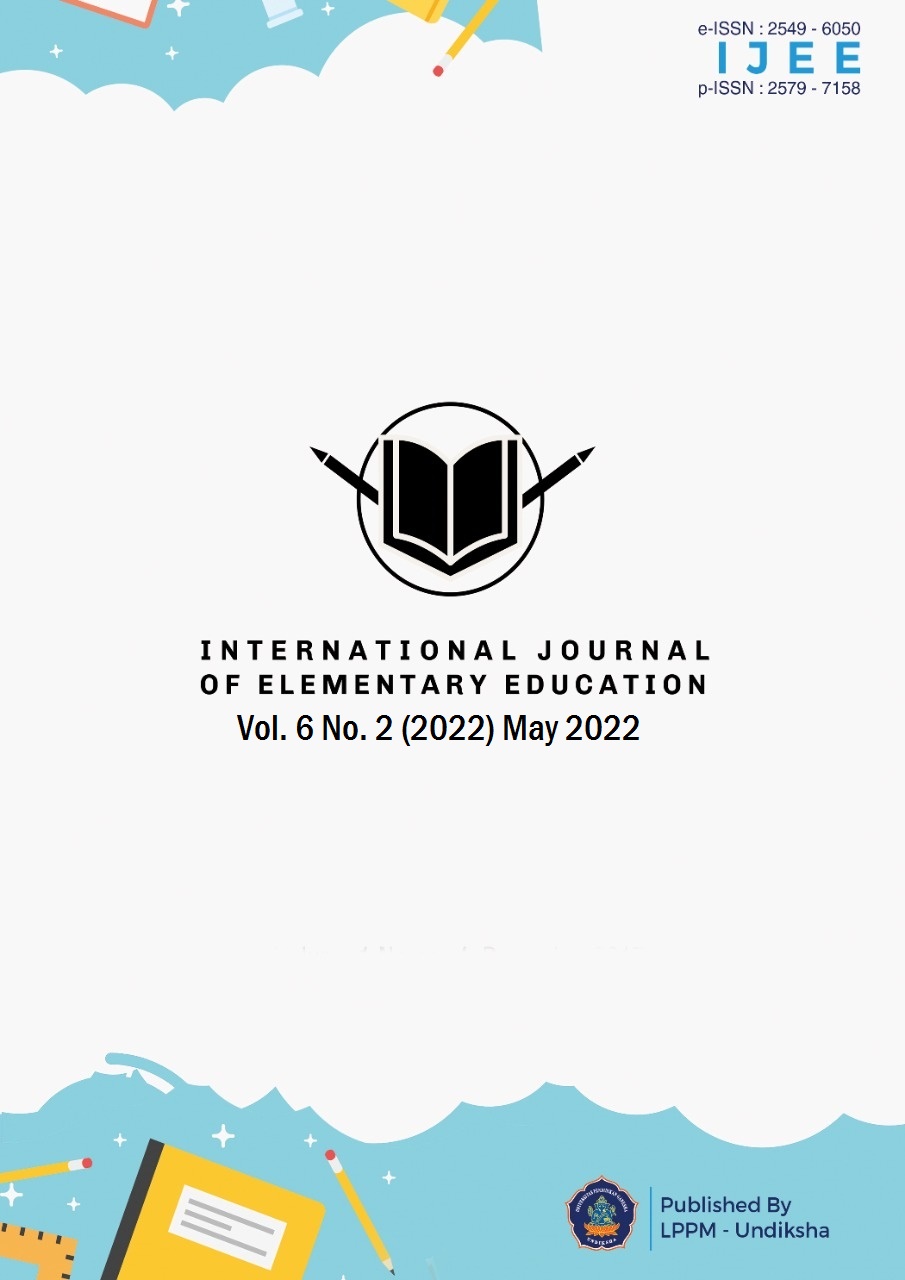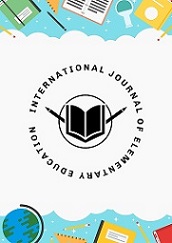The Succesful of Student Well-Being Development Through Child-Friendly School Programs
DOI:
https://doi.org/10.23887/ijee.v6i2.46019Keywords:
child friendly school, student well being, succesfullAbstract
The paradigm shift in education has stimulated the emergence of new issues regarding the focus of education, including student wellbeing. The well-being of students at school will have a significant impact on their academic success and socio-emotional and health development. One of the efforts to improve student welfare is the child-friendly school program. This study aims to analyze the success of child-friendly schools in developing student welfare by using the method of observation and interviews with principals, vice-principals, teachers, and academic staff in one of the elementary schools. The data were analyzed using theme analysis techniques. The results of this study indicate that a school model that can develop student welfare is a school that, in the process of its implementation, there is a learning pattern that favors students, a pattern of humanistic social relations among school residents, as well as environmental support and infrastructure that is friendly to students. This study implies that policies in educational practice must be able to cloud the implementation of child-friendly schools, which can be a solution to developing student wellbeing.
References
Äärelä, T., Määttä, K., & Uusiautti, S. (2018). The challenges of parent–teacher collaboration in the light of hospital school pedagogy. Early Child Development and Care, 188(6), 709–722. https://doi.org/10.1080/03004430.2016.1230108.
Adiningrum, T. S. (2021). “Students can be the center of their own learning”: lessons learnt from a transnational collaborative academic development project. International Journal for Academic Development, 1–14. https://doi.org/10.1080/1360144X.2021.1963256.
Akmaliyah. (2021). Child-friendly teaching approach for Arabic language in Indonesian Islamic boarding school. International Journal of Language Education, 5(1), 501–514. https://doi.org/10.26858/IJOLE.V5I1.15297.
Aldridge, J. (2018). The relationships between school climate and adolescent mental health and wellbeing: A systematic literature review. International Journal of Educational Research, 88, 121–145. https://doi.org/10.1016/j.ijer.2018.01.012.
Anderson, D. L. (2022). Positive links between student participation, recognition and wellbeing at school. International Journal of Educational Research, 111. https://doi.org/10.1016/j.ijer.2021.101896.
Aouad, J., & Bento, F. (2020). A complexity perspective on parent-teacher collaboration in special education: Narratives from the field in Lebanon. Journal of Open Innovation: Technology, Market, and Complexity, 6(1). https://doi.org/10.3390/joitmc6010004.
Asimakopoulos, G. (2021). The Role of Centers of Teaching and Learning in Supporting Higher Education Students Learning. Journal of Higher Education Theory and Practice, 21(13), 69–78. https://doi.org/10.33423/jhetp.v21i13.4789.
Aziz, R., Rinda, A., Novezry, Rahmawati, Selina, S., Hasan, M., Mustofa, & Hady, M. S. (2021). Students’ social care during the COVID-19 pandemic: How do school and family make collaboration to develop it? Journal of Educational Research and Evaluation, 5(4), 542–550. https://doi.org/10.23887/jere.v5i4.36911.
Aziz, R., Sidik, N. A. H., Trimansyah, T., Khasanah, N., & Yulia, N. M. (2020). Model suasana kelas yang mensejahterakan siswa tingkat pendidikan dasar. Mediapsi, 6(2), 94–101. https://doi.org/10.21776/ub.mps.2020.006.02.3.
Bang, Y. S. (2018). Parents’ perspectives on how their behaviors impede parent–teacher collaboration. Social Behavior and Personality, 46(11). https://doi.org/10.2224/sbp.7270.
Cobanoglu, F., Ayvaz-Tuncel, Z., & Ordu, A. (2018). Child-friendly schools: An assessment of secondary schools. Universal Journal of Educational Research, 6(3), 466–477. https://doi.org/10.13189/ujer.2018.060313.
Coll-Seck, A. (2019). Framing an agenda for children thriving in the SDG era: a WHO–UNICEF–Lancet Commission on Child Health and Wellbeing. The Lancet, 393(10167), 109–112. https://doi.org/10.1016/S0140-6736(18)32821-6.
Doll, B. (2021). Data-based assessment of psychological wellbeing in whole school environments. In Building Better Schools with Evidence-based Policy: Adaptable Policy for Teachers and School Leaders (pp. 284–289). https://api.elsevier.com/content/abstract/scopus_id/85110319267.
Dyg, P. M. (2018). Wellbeing in school gardens–the case of the Gardens for Bellies food and environmental education program. Environmental Education Research, 24(8), 1177–1191. https://doi.org/10.1080/13504622.2018.1434869.
Fitriani, S. (2021). A child-friendly school: How the school implements the model. International Journal of Evaluation and Research in Education, 10(1), 273–284. https://doi.org/10.11591/IJERE.V10I1.20765.
Flores-Verduzco, G. R. (2020). School environment as a mediating variable between family support and social wellbeing an high school students. International Journal of Emotional Education, 12(2), 26–40. https://api.elsevier.com/content/abstract/scopus_id/85102516588.
Hajaroh, M. (2020). The implementation of indonesia’s child friendly school policy based on environment in the coastal tourist area of Gunungkidul, Indonesia. Geojournal of Tourism and Geosites, 31(3), 1010–1018. https://doi.org/10.30892/gtg.31312-535.
Halladay, J. (2020). Teacher-student relationships and mental health help seeking behaviors among elementary and secondary students in Ontario Canada. Journal of School Psychology, 81, 1–10. https://doi.org/10.1016/j.jsp.2020.05.003.
Hansen, A. S. (2018). The visitor: connecting health, wellbeing and the natural environment. In Tourism, health, wellbeing and protected areas (pp. 125–137). CABI. https://doi.org/10.1079/9781786391315.0125.
Hou, H. (2021). Wellbeing literacy: Conceptualization, measurement, and preliminary empirical findings from students, parents and school staff. International Journal of Environmental Research and Public Health, 18(4), 1–14. https://doi.org/10.3390/ijerph18041485.
Hughes, H. (2019). School spaces for student wellbeing and learning: Insights from research and practice. In School Spaces for Student Wellbeing and Learning: Insights from Research and Practice. https://doi.org/10.1007/978-981-13-6092-3.
Kalkan, F., & Dağlı, E. (2021). The relationships between school climate, school belonging and school burnout in secondary school students. International Journal of Contemporary Research, 8(4), 59–79. https://doi.org/10.33200/ijcer.878682.
Konu, A., & Rimpella, M. (2002). Well-being in schools: a conceptual model. Health Promotion International, 17(1), 79–87. https://doi.org/10.1093/heapro/17.1.79.
Lozančić, A. J., Basta, S., & Šerbetar, I. (2019). Teachers’ attitudes towards collaboration with parents: Development and evaluation of the questionnaire. Sodobna Pedagogika/Journal of Contemporary Educational Studies , 70(4).
Mairitsch, A. (2021). Being a student, becoming a teacher: The wellbeing of pre-service language teachers in Austria and the UK. Teaching and Teacher Education, 106. https://doi.org/10.1016/j.tate.2021.103452.
McCree, M. (2018). The Hare and the Tortoise go to Forest School: taking the scenic route to academic attainment via emotional wellbeing outdoors. Early Child Development and Care, 188(7), 980–996. https://doi.org/10.1080/03004430.2018.1446430.
Miller, V. (2019). Creating the third teacher through participatory learning environment design: Reggio Emilia principles support student wellbeing. In School Spaces for Student Wellbeing and Learning: Insights from Research and Practice (pp. 239–258). https://doi.org/10.1007/978-981-13-6092-3_13.
Muchsini, B., & Siswandari. (2020). Class culture and the academic stress of digital natives generations. Cakrawala Pendidikan, 39(1), 102–110. https://doi.org/10.21831/cp.v39i1.26910.
Oladapo, O. (2018). WHO model of intrapartum care for a positive childbirth experience: transforming care of women and babies for improved health and wellbeing. BJOG: An International Journal of Obstetrics and Gynaecology, 125(8), 918–922. https://doi.org/10.1111/1471-0528.15237.
Pada, D. M. (2021). Implementation of Child-Friendly School Concept in Elementary School as Early Education Environment. IOP Conference Series: Earth and Environmental Science, 794(1). https://doi.org/10.1088/1755-1315/794/1/012209.
Park, H. (2020). Interrelations between after-school settings and the delinquency and emotional-behavioral problems of elementary school children: Findings from fragile families and child wellbeing study. Social Sciences, 9(9). https://doi.org/10.3390/SOCSCI9090161.
Poots, A. T. C. (2020). Academic expectation, self-compassion, psychological capital, social support and student wellbeing. International Journal of Educational Research, 99. https://doi.org/10.1016/j.ijer.2019.101506.
Pulimeno, M. (2020). Children’s literature to promote students’ global development and wellbeing. In Health Promotion Perspectives (Vol. 10, Issue 1, pp. 13–23). https://doi.org/10.15171/hpp.2020.05.
Rodríguez, S. (2020). Success in mathematics and academic wellbeing in primary-school students. Sustainability (Switzerland), 12(9). https://doi.org/10.3390/su12093796.
Salle, T. La. (2018). An examination of school climate, victimization, and mental health problems among middle school students self-identifying with emotional and behavioral disorders. Behavioral Disorders, 43(3), 383–392. https://doi.org/10.1177/0198742918768045.
Schnitker, S. A. (2019). Framing gratitude journaling as prayer amplifies its hedonic and eudaimonic well-being, but not health, benefits. Journal of Positive Psychology, 14(4), 427–439. https://doi.org/10.1080/17439760.2018.1460690.
Schwab, S. (2020). Teachers’ Judgments of Students’ School-Wellbeing, Social Inclusion, and Academic Self-Concept: A Multi-Trait-Multimethod Analysis Using the Perception of Inclusion Questionnaire. Frontiers in Psychology, 11. https://doi.org/10.3389/fpsyg.2020.01498.
Strelhow, M. R. W., Sarriera, J. C., & Casas, F. (2020). Evaluation of well-being in adolescence: Proposal of an integrative model with hedonic and eudemonic aspects. Child Indicators Research, 13(4), 1439–1452. https://doi.org//10.1007/s12187-019-09708-5.
Stroetinga, M., Leeman, Y., & Veugelers, W. (2021). Primary School Teachers ’ Practices of Collaborating With Parents on Upbringing. School Community Journal, 31(1), 259–282.
Syafrudie, H. A. (2021). School readiness in supporting child-friendly schools reviewed from noise aspect of the classroom in a primary public school in the new normal era. IOP Conference Series: Earth and Environmental Science, 802(1). https://doi.org/10.1088/1755-1315/802/1/012017.
Thomas, S. (2018). Child friendly schools: Challenges and issues in creating a positive and protective school environment. In Positive Schooling and Child Development: International Perspectives (pp. 233–248). https://doi.org/10.1007/978-981-13-0077-6_12.
Tiplady, L. S. E. (2021). Forest School for wellbeing: an environment in which young people can ‘take what they need.’ Journal of Adventure Education and Outdoor Learning, 21(2), 99–114. https://doi.org/10.1080/14729679.2020.1730206.
Turner, K., & Teilking, M. (2019). Teacher wellbeing: Its effects on teaching practice and student learning. Issues in Educational Research, 29(3), 938–960. https://search.informit.org/doi/10.3316/ielapa.641930197632835.
Ulmanen, S. (2022). Primary and Lower Secondary School Students’ Social Support Profiles and Study Wellbeing. Journal of Early Adolescence. https://doi.org/10.1177/02724316211058061.
Venkatramanan, V., & Shah, S. (2019). Climate Smart Agriculture Technologies for Environmental Management: The Intersection of Sustainability, Resilience, Wellbeing and Development. Sustainable Green Technologies for Environmental Management, 29–51. https://doi.org/10.1007/978-981-13-2772-8_2.
Vinuela-Navarro, V. (2019). Quantitative characterization of smooth pursuit eye movements in school-age children using a child-friendly setup. Translational Vision Science and Technology, 8(5). https://doi.org/10.1167/tvst.8.5.8.
Virtanen, T. E. (2019). Associations between observed patterns of classroom interactions and teacher wellbeing in lower secondary school. Teaching and Teacher Education, 77, 240–252. https://doi.org/10.1016/j.tate.2018.10.013.
Yang, C. (2018). Bullying victimization and student engagement in elementary, middle, and high schools: Moderating role of school climate. School Psychology Quarterly, 33(1), 54–64. https://doi.org/10.1037/spq0000250.
Downloads
Published
How to Cite
Issue
Section
License
Copyright (c) 2022 Retno Mangestuti, Mulyadi Mulyadi, Esa Nur Wahyuni, Rahmat Aziz, Saifuddin Zuhri Qudzy

This work is licensed under a Creative Commons Attribution-ShareAlike 4.0 International License.
Authors who publish with the International Journal of Elementary Education agree to the following terms:
- Authors retain copyright and grant the journal the right of first publication with the work simultaneously licensed under a Creative Commons Attribution License (CC BY-SA 4.0) that allows others to share the work with an acknowledgment of the work's authorship and initial publication in this journal.
- Authors are able to enter into separate, additional contractual arrangements for the non-exclusive distribution of the journal's published version of the work (e.g., post it to an institutional repository or publish it in a book), with an acknowledgment of its initial publication in this journal.
- Authors are permitted and encouraged to post their work online (e.g., in institutional repositories or on their website) prior to and during the submission process, as it can lead to productive exchanges, as well as earlier and greater citation of published work. (See The Effect of Open Access)










